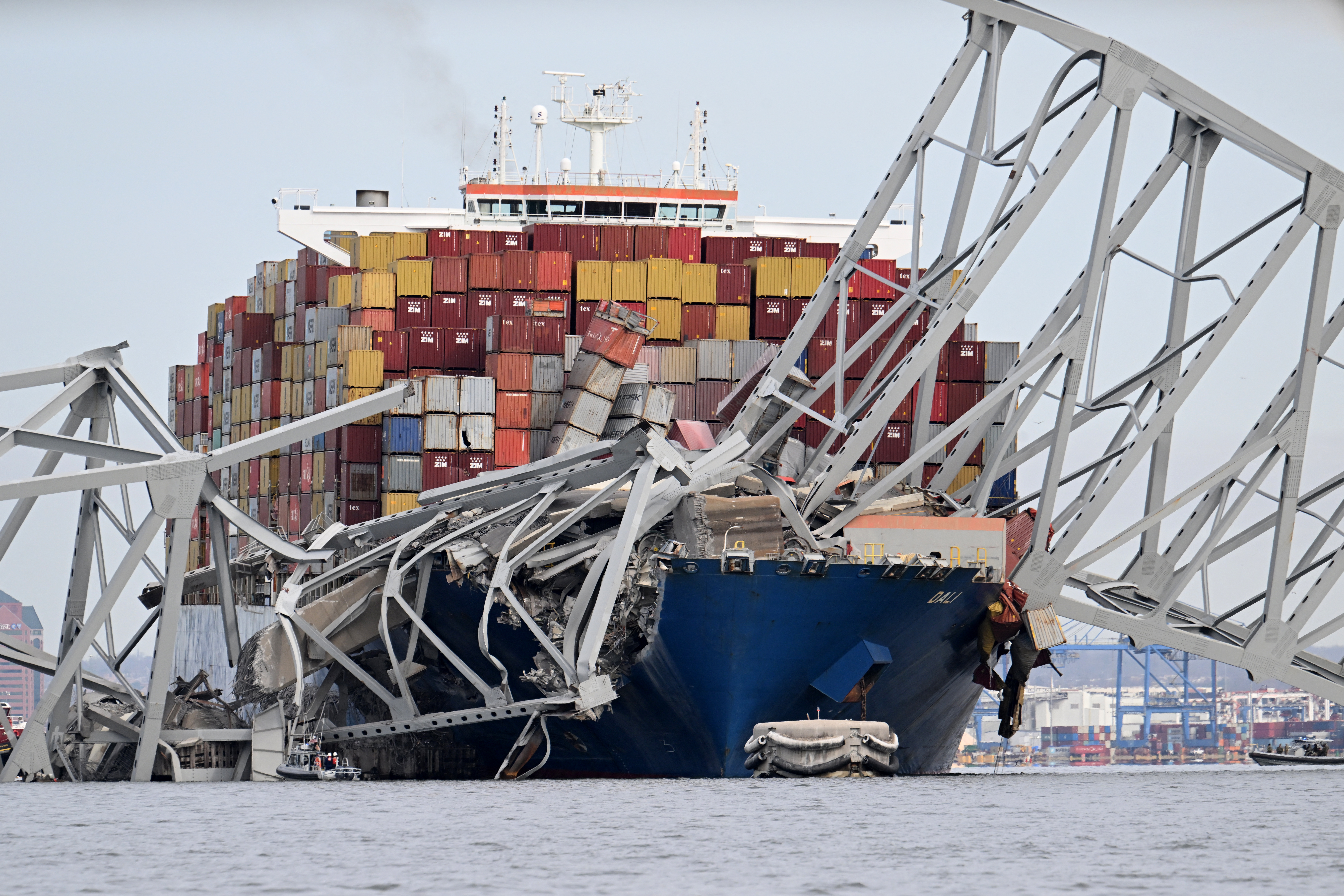The cargo ship Dali was reported in good condition before it left the Port of Baltimore but had experienced an electrical blackout while undergoing maintenance about 10 hours prior, investigators probing the March collapse of the Francis Scott Key Bridge said in a preliminary report released Tuesday.
The power outage was caused by a crewmember mistakenly closing an exhaust damper, causing the ship’s engine to stall, the report issued by the National Transportation Safety Board said. The ship lost power again and crashed into one of the bridge's supporting columns shortly after leaving the port on March 26, which brought the bridge down in seconds.
The senior pilot and apprentice pilot on the ship were not told about the previous day's power outage, the report says.
A full investigation could take a year or more, the agency said.
Get Philly local news, weather forecasts, sports and entertainment stories to your inbox. Sign up for NBC Philadelphia newsletters.
The board launched its investigation almost immediately after the collapse, which sent six members of a roadwork crew plunging to their deaths.
Two other workers — a member of the road crew and an inspector from another company — survived. The inspector managed to get to part of the bridge that didn't fall, and the construction worker was rescued from the water.
Investigators boarded the ship to document the scene and collect evidence, including the vessel’s data recorder and information from its engine room, according to board chair Jennifer Homendy. Investigators also interviewed the captain and crew members.
“Our mission is to determine why something happened, how it happened and to prevent it from recurring,” Homendy said at a news conference days after the disaster.
According to the preliminary report, at 1:25 a.m. on March 26, when the Dali was a little over half a mile away from the bridge, a primary electrical breaker that fed most of the ship’s equipment and lighting unexpectedly tripped, causing the ship to lose electrical power and experience a blackout. The main propulsion diesel engine shut down after the pumps lost electrical power. The ship’s crew was able to restore power, then called for an assist from tug boats, and the senior pilot ordered the ship’s anchor to be dropped, but it was too late to anchor the ship or for tug boats to reach the Dali and help it avoid the disaster. It's unclear how much of the anchor went into the water.
A second blackout then occurred with the ship a couple of hundred yards away from the bridge, and a marine radio call was made to warn waterborne traffic. The ship then struck a main support pier on the bridge, causing it to collapse within seconds.
Bridge inspectors rated the conditions of the deck, the superstructure and the substructure as being in “satisfactory condition” in May 2023, the report says.
A crew member on the Dali dodged debris that fell when the ship made contact with the bridge. Another crew member was hurt by debris.
Drugs and alcohol are not believed to be a factor, as everyone reportedly tested negative.
The ship, which was headed from Baltimore to Sri Lanka, issued a mayday alert with just enough time for police to stop traffic, but not enough to save the workers filling potholes on the bridge.
The last of the victims’ bodies was recovered last week.
On Monday, crews conducted a controlled demolition to break down the largest remaining span of the collapsed Francis Scott Key Bridge, a major step in freeing the grounded Dali container ship. The unified command leading the operation hopes to move the Dali back into the Port of Baltimore Wednesday.
The board’s preliminary report released Tuesday likely includes a fraction of the findings that will be presented in its final report.
Of the 4,680 containers on board, 56 were identified to contain hazardous materials, 14 of which may have been damaged. No hazardous materials entered into the water.
Testing of the ship's fuel did not reveal any concerns related to its quality, according to the preliminary report.
The FBI has also launched a criminal investigation into the circumstances leading up to the collapse.
Homendy said the National Transportation Safety Board investigation would probe all aspects of the crash, including what caused the ship’s power loss and whether it had been experiencing similar issues prior to the blackout.
Investigators also planned to review policies, training practices and other factors that could be relevant. And the design, engineering and condition of the bridge would be studied, she said.
Homendy said before a U.S. Senate committee last month that the investigation was focused on the ship’s electrical system generally.
Homendy said investigators were collecting information from the vessel’s engine room and circuit breakers, which she said “will help us tremendously.”
Marcel Muise, safety board investigator in charge, previously laid out a preliminary timeline assembled from the voyage data recorder comprising audio from the bridge and radio exchanges ahead of the collapse. He said experts would review the entire voyage data recording and develop a detailed transcript.



